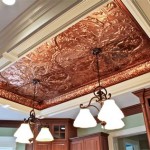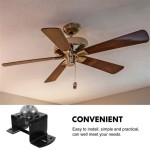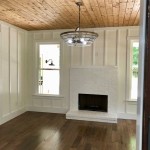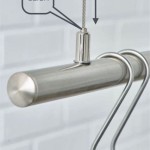How to Mount a Ceiling Fan on Angled Walls
Installing a ceiling fan can significantly improve air circulation and comfort in any room. However, mounting a ceiling fan on an angled or sloped ceiling presents unique challenges compared to a standard, flat ceiling. Careful planning, the right equipment, and adherence to safety precautions are essential for a successful and safe installation.
This article will provide a detailed guide on how to mount a ceiling fan on angled walls, covering the necessary tools, preparation steps, installation procedures, and crucial safety considerations. It is important to note that electrical work can be hazardous. If unfamiliar with electrical wiring, consulting a qualified electrician is strongly advised.
Assessing the Situation and Gathering Materials
The first step in mounting a ceiling fan on an angled ceiling is to assess the specific conditions of the installation site. This involves several key considerations that will influence the choice of materials and the installation method.
Firstly, the degree of the ceiling's slope must be determined. This measurement is crucial for selecting the appropriate downrod length and potentially a specialized angled ceiling mount. Most ceiling fan manufacturers specify the maximum allowable slope for their fans, often ranging from 15 to 45 degrees. Using a level and a protractor or an angle finder can accurately measure the ceiling's slope.
Secondly, the structural integrity of the mounting location needs to be evaluated. The ceiling fan will be supported by a ceiling joist or a specially installed bracing system. It is imperative to ensure that the chosen joist is strong enough to support the weight of the fan, which can range from 15 to 50 pounds or more. If the existing joist appears inadequate, reinforcement or the installation of a fan-rated bracing system may be necessary.
Thirdly, the electrical wiring must be inspected to ensure it is suitable for the ceiling fan. A dedicated circuit, typically a 15-amp circuit, is required for most ceiling fans. Check the gauge of the wiring to ensure it is appropriate for the intended load. Additionally, verify that the existing electrical box is fan-rated, meaning it is designed to support the weight and vibration of a ceiling fan. If the existing box is not fan-rated, it must be replaced with an appropriate one.
Once the assessment is complete, gather the necessary materials. These typically include:
*Ceiling Fan: Choose a fan with a design suitable for angled ceilings. Some fans come with angled mounting kits or are specifically designed to accommodate slopes.
*Angled Ceiling Mounting Kit (if required): This kit provides a secure and level mounting surface for the fan.
*Downrod: Select a downrod of appropriate length to ensure proper fan blade clearance. Longer downrods are often needed for angled ceilings to maintain adequate distance between the blades and the ceiling.
*Fan-Rated Electrical Box: This box is designed to support the weight and vibration of a ceiling fan.
*Wire Connectors (Wire Nuts): These are used to safely connect the electrical wires.
*Electrical Tape: Used for insulating and securing wire connections.
*Screws and Hardware: Ensure you have the necessary screws and hardware for mounting the fan and the electrical box.
*Tools: A collection of tools are needed, including a stud finder, level, drill, screwdriver (both Phillips and flathead), wire stripper, wire crimper, voltage tester, ladder, safety glasses, and work gloves.
Preparing the Mounting Location and Electrical Wiring
After gathering the materials, the next step is to prepare the mounting location and ensure the electrical wiring is ready for the new ceiling fan. This involves several crucial steps that must be followed meticulously to ensure a safe and functional installation.
Firstly, disconnect the power to the circuit at the circuit breaker. This is the most important safety precaution to prevent electrical shock. Use a voltage tester to confirm that the power is indeed off before proceeding with any electrical work. Never assume the power is off based solely on the breaker position.
Secondly, remove any existing light fixture or ceiling fan. Carefully disconnect the wiring, noting the color-coding of the wires (black for hot, white for neutral, and green or bare copper for ground). If unsure about the wiring configuration, take a picture before disconnecting anything.
Thirdly, install the fan-rated electrical box if necessary. This is a critical step, especially if the existing box is not designed to support the weight of a ceiling fan. Locate a suitable ceiling joist that can bear the weight of the fan. If the joist is not accessible or adequately strong, install a fan-rated bracing system between the joists. Securely attach the electrical box to the joist or bracing system according to the manufacturer's instructions. Ensure the box is flush with the ceiling surface and properly aligned.
Fourthly, prepare the electrical wiring. Strip the ends of the wires to expose about 1/2 inch of copper. Pre-twist the wires that will be connected together to ensure a secure and reliable connection. If the existing wiring is damaged or frayed, it may need to be replaced by a qualified electrician.
Fifthly, if using an angled ceiling mounting kit, install it according to the manufacturer's instructions. This kit provides a level surface for mounting the fan motor housing. Ensure the kit is securely attached to the electrical box and is properly aligned with the ceiling slope.
Proper preparation is critical for a successful and safe installation. Taking the time to carefully assess the situation, gather the correct materials, and prepare the mounting location and electrical wiring will significantly reduce the risk of problems during the installation process.
Installing the Ceiling Fan
With the mounting location prepared and the electrical wiring ready, the process of installing the ceiling fan can begin. This involves assembling the fan components, connecting the electrical wiring, and securing the fan to the mounting bracket. This stage requires careful attention to detail and adherence to the manufacturer's instructions.
Firstly, assemble the ceiling fan according to the manufacturer's instructions. This typically involves attaching the fan blades to the blade holders, assembling the motor housing, and attaching the downrod to the motor housing. Ensure all screws and hardware are tightened securely. Refer to the installation manual for specific instructions related to your ceiling fan model.
Secondly, carefully lift the assembled fan motor housing and attach it to the mounting bracket. Most ceiling fans have a ball-and-socket joint that allows the fan to hang freely from the bracket. Ensure the ball is properly seated in the socket and that the fan is securely supported by the bracket.
Thirdly, connect the electrical wiring. Match the wires from the fan to the wires in the electrical box according to the color-coding. Connect the black wire from the fan to the black wire in the box, the white wire from the fan to the white wire in the box, and the green or bare copper wire from the fan to the green or bare copper wire in the box. Use wire connectors (wire nuts) to securely connect the wires, twisting them tightly and then wrapping them with electrical tape for added insulation. Ensure that no bare wire is exposed.
Fourthly, carefully tuck the wires into the electrical box, ensuring they are not pinched or damaged. Attach the canopy to the mounting bracket, concealing the wiring and providing a finished look. Secure the canopy with the provided screws.
Fifthly, install the light kit (if applicable) according to the manufacturer's instructions. This usually involves connecting additional wires and attaching the light fixture to the fan motor housing. Ensure all connections are secure and that the light fixture is properly aligned.
Sixthly, install the fan blades. Carefully attach the fan blades to the blade holders, ensuring they are properly aligned and securely fastened. The blades should be balanced to prevent wobbling during operation.
Finally, restore power to the circuit at the circuit breaker. Test the ceiling fan to ensure it is operating correctly. Check the fan speeds, the light (if applicable), and the direction of rotation. If the fan wobbles, use the balancing kit provided by the manufacturer to balance the blades.
By following these steps carefully and referring to the manufacturer's instructions, you can successfully install a ceiling fan on an angled ceiling. Remember that safety is paramount. If unsure about any step, consulting a qualified electrician is always recommended.

How To Install A Ceiling Fan On Sloped Lemon Thistle

Electrical Mount Ceiling Fan At The Peak Of A Sloped Home Improvement Stack Exchange

How To Choose A Ceiling Fan For Vaulted Ceilings Lightology

How To Install A Ceiling Fan On Sloped Lemon Thistle

Ensuring Proper Ceiling Fan Installation With Vaulted Ceilings

How To Find Ceiling Fans Slope Adapters And Downrods For Angled Ceilings Delmarfans Com

How To Choose A Ceiling Fan For Vaulted Ceilings Lightology

How To Install A Ceiling Fan Hunter

How To Choose A Ceiling Fan For Vaulted Ceilings Lightology

How To Install A Ceiling Fan On Sloped Lemon Thistle
Related Posts








